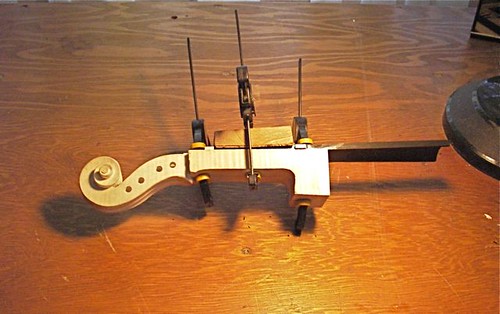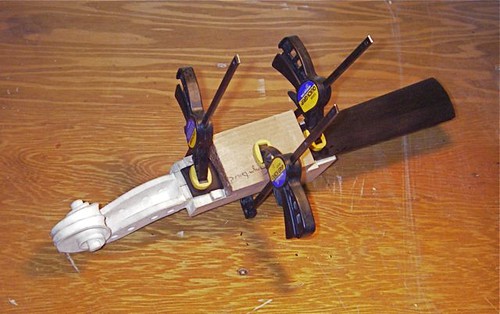
Removing a fingerboard off an older factory fiddle, intent on replacing it, I ran across these markings, and that gave me pause. We often see these Roman Numeral markings on factory fiddles (and bows) from the late 1800s and early 1900s. Apparently it was a way to keep the individually fit pieces together during the assembly process, probably not done by one person. In this instance, perhaps, one person fit fingerboards all day. Or maybe the number refers to the worker, and is a way of keeping track of pay. I don't know. Here we see XVI (little I) on both the violin neck and the underscoop of the fingerboard. You can also make out the cross-hatching on the neck, which is one method to allow for a little squeeze-out of the glue. Some folks think it helps hold the joint together. We all have our magic formulas in making.
Anyway, this fingerboard has been on the instrument for maybe 100 years, and is just now being replaced. Just a moment of respect, then on to the job.







